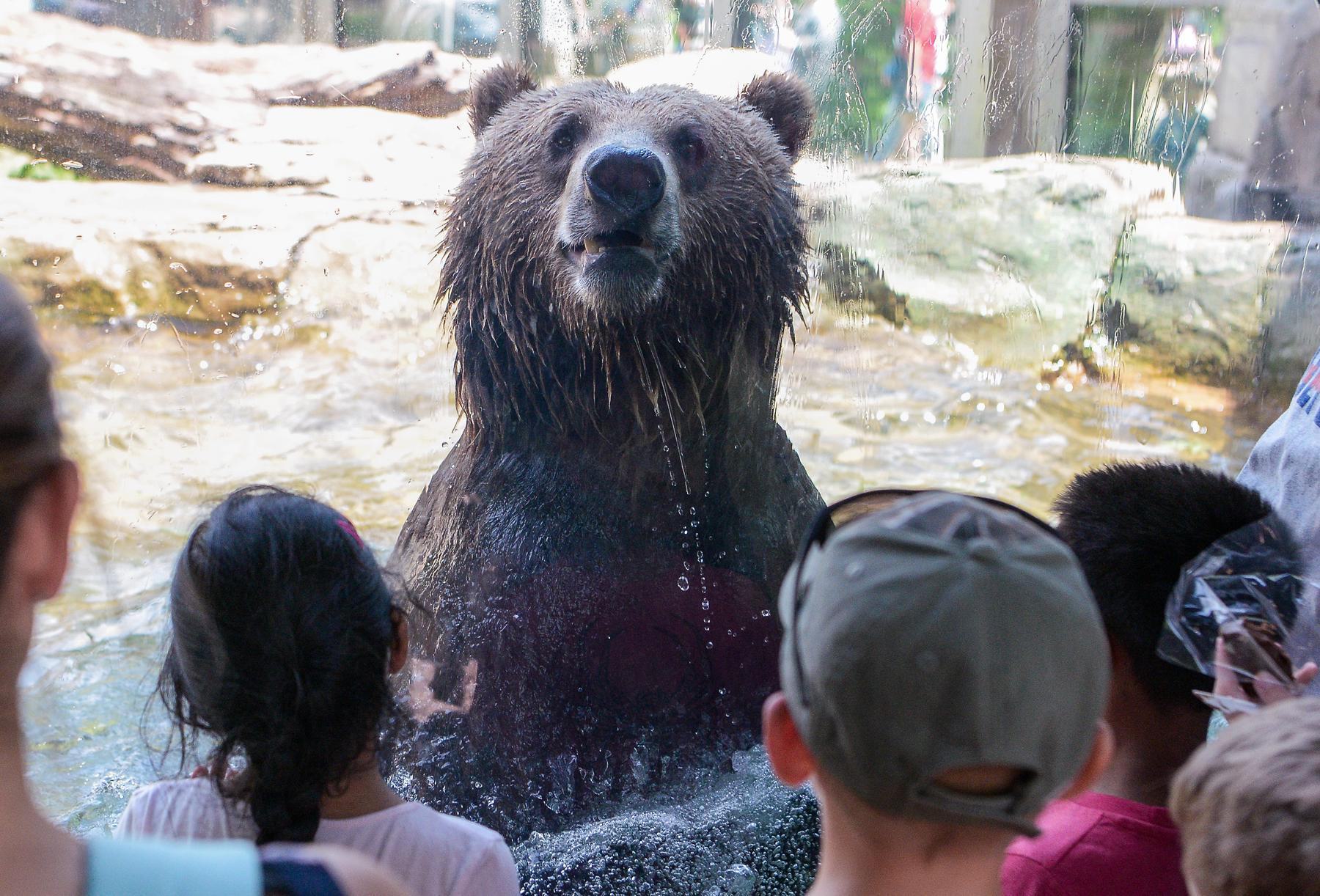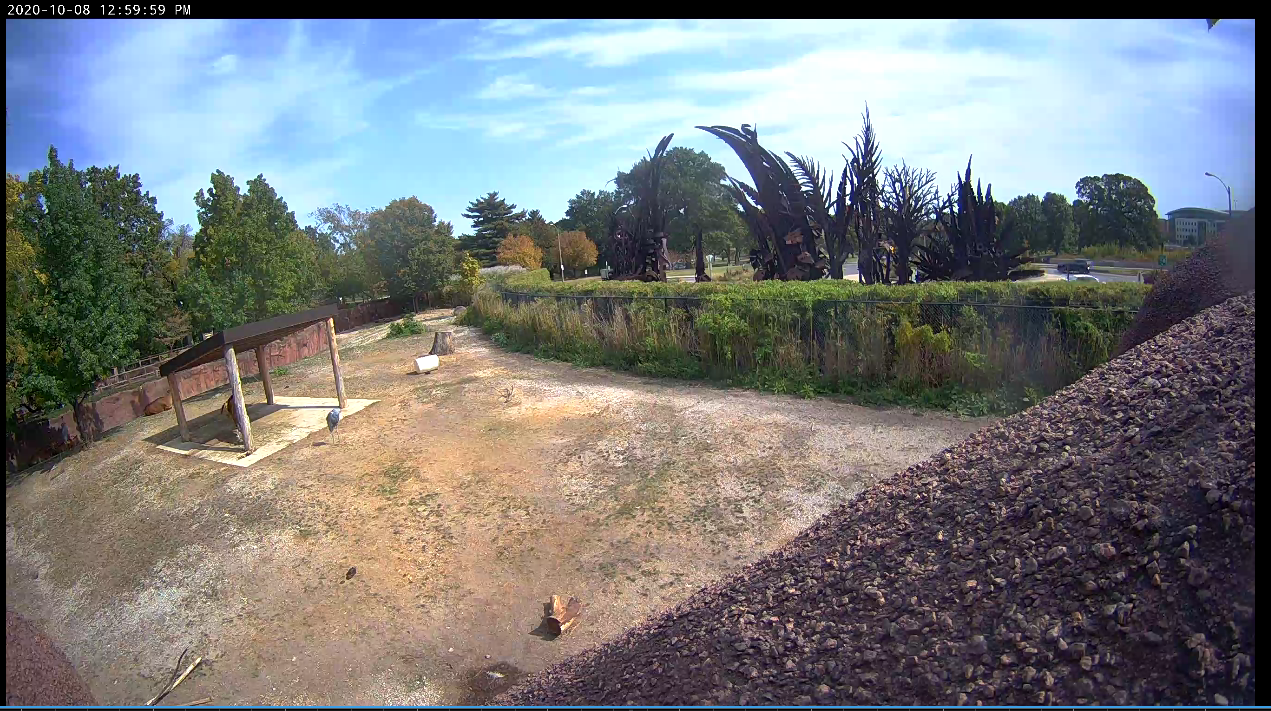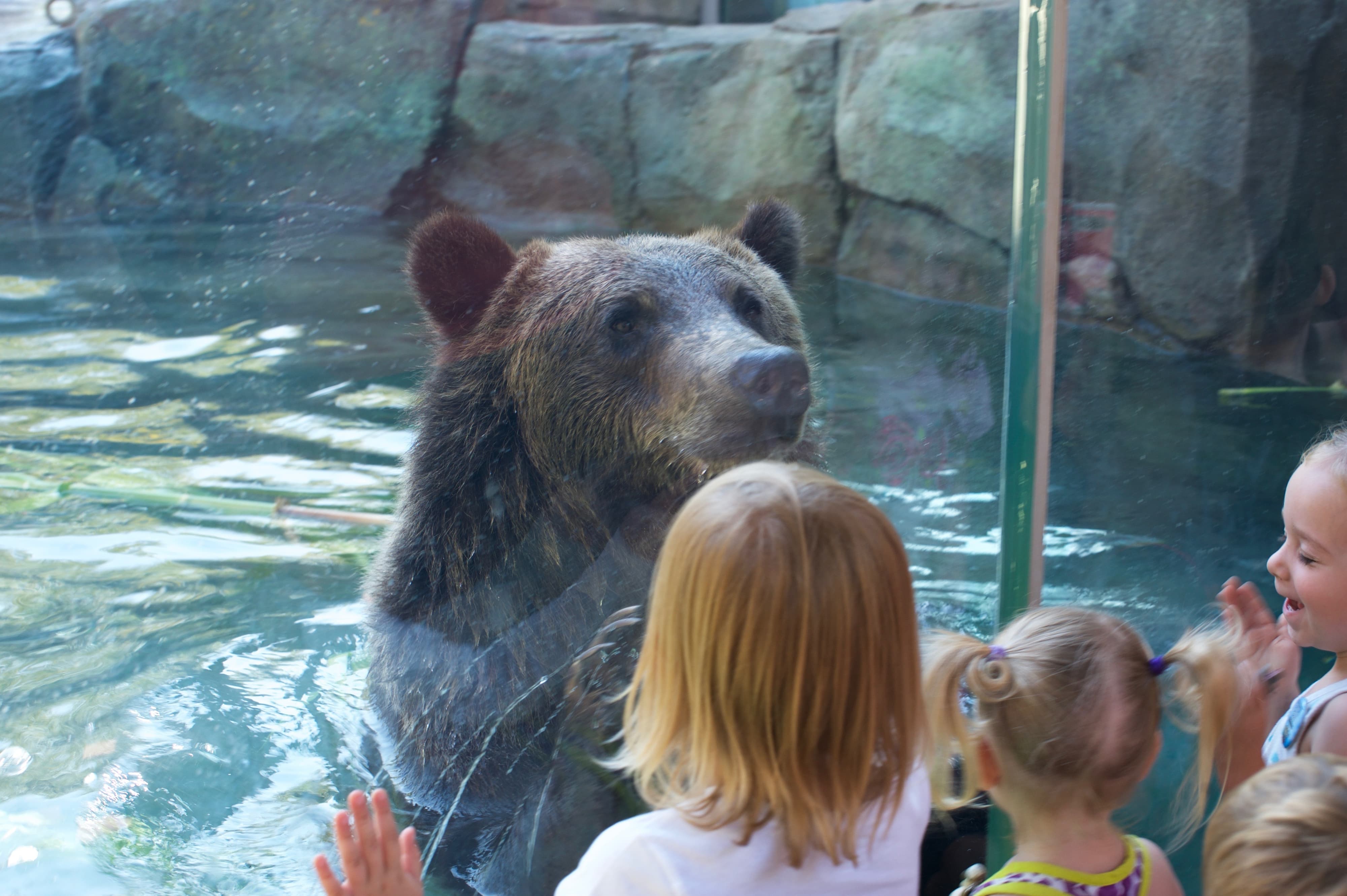Author: Saint Louis Zoo Animal Welfare Scientist Ashley Edes

In spring 2020, zoos around the world closed their doors to help slow the spread of COVID-19. As closures stretched from weeks to months, a common question from those who love zoos was “Do the animals miss us?”
How the presence of visitors affects the behavior and physiology of animals in zoos has been an area of frequent study since the late 1970s. We’ve conducted some of this research here at the Saint Louis Zoo (for example, how guests impact swimming behavior in penguins). As such, the question of whether the sudden prolonged absence of visitors in spring 2020 was affecting the animals in our care prompted us to develop a study under unusual circumstances.
How did we study animals when the researchers were working from home?

With COVID-19 safety precautions in place, there were limitations to what we could do. To protect the health of both the staff and the animals, we were unable to collect behavioral data using live observers. However, the Zoo has video cameras in place across a number of habitats (like the live webcams!) to allow for remote monitoring. We took advantage of these capabilities to record footage that we could then use to map how certain species were using the space in their habitats. We thought animals who find visitors stimulating or interesting would spend more time near visitor viewing areas when guests are present and less time in those areas during the closure, and vice versa.
We included four species in this study: banteng, polar and grizzly bears, and gorillas. We monitored space use during four phases: the closure in spring 2020, right after reopening in summer 2020, fall 2020 after a period of potential readjustment to guests, and finally spring 2021 during the same time of year as spring 2020. This final spring 2021 phase was to check whether any potential changes were due to normal seasonal variation in behavior.
How did space use change when guests returned to the zoo?
When guests first returned to the zoo in summer 2020, the banteng spent significantly more time near visitor viewing areas than they had during the closure. Their primary shade structure, an important resource in summer, is located away from visitor viewing areas, and the movement away from it suggests banteng were highly motivated to be near guests. In fall 2020 and spring 2021, the banteng continued to occupy areas near visitors more frequently than during the closure, indicating maintained interest in guests over the long-term.
Grizzly bears Huck and Finley as well as polar bear Kali spent more time outside of their dens and near visitor viewing areas after guests returned in all phases after reopening compared with the closure. If you’ve had the chance to visit Centene Grizzly Ridge and McDonnell Polar Bear Point, you’ll know their pools are located right next to the glass. Cool water is obviously a big draw during the hot summer months, but the bears continued to occupy locations near visitor viewing areas at higher levels even during cooler fall and spring temperatures after guests had returned to the zoo than during the closure, meaning they were not drawn to those areas simply to use their pools.

Our gorillas may have been a bit more unsettled by the sudden return of guests, as there was a small decrease in the amount of time the gorillas occupied the space closest to visitor viewing areas in summer 2020 compared to during the closure. However, by the time we observed them in fall 2020 and spring 2021, the amount of time spent near visitor viewing areas had gone back to or was slightly higher than what was observed during the closure. It is important to note that some of the shade structures the gorillas use in summer months can be located further back in the habitat, which may have influenced where the animals chose to spend their time. Regardless, the impact on space use in the gorillas was minimal and disappeared once the animals had a chance to readjust to guests being present.
So, did the animals miss visitors?
While we can’t say for sure how the animals are feeling, the results of this study suggest that the banteng, grizzly bears, and polar bear are interested in and potentially enriched by guests, while our gorillas may be a bit more neutral about visitors. Guests are an important piece of the zoo environment and studies like this one help us ensure that the animals in our care are thriving. If you’re interested in reading the published study or others like it, it is freely available as part of a special issue of the Journal of Zoological and Botanical Gardens dedicated to studies that took advantage of COVID-19 closures to better understand the effect visitors have on zoo animals.

